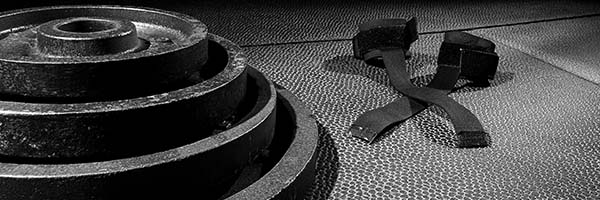Blog
Best Weight Training Volume Strategies
More is More – Drop sets, Cheat Reps, and other Volume Strategies for Better Gains Weight Training
Best Weight Training Volume Strategies
More is More – Drop sets, Cheat Reps, and other Volume Strategies for Better Gains Weight Training.

As discussed in our previous Progressive Overload article, it’s impossible to get bigger and stronger unless you increase the challenge.
Upping the weight is the most obvious way to overload, but what happens when you can’t anymore unless you break form?
The answer is to increase training volume. Volume is the amount of work performed on a single exercise or muscle group in a given amount of time.
So, you add some sets. But you can only add so many sets until A) you’re in the gym for three hours, B) you stop seeing progress from overtraining, and C) you’re bored to death.
So how can we increase volume without keeping us in the gym past dinnertime or killing our gains?
This article describes some time-tested ways to do precisely that without adding sets, and it even includes a workout so you can see the best way to implement these tools in real-time.
When it comes to increasing volume without adding sets, there are two main categories. The first is:
Repetition Based Strategies
Rep-based strategies involve pushing you closer to mechanical failure (meaning you could not do another rep if you wanted to). This approach increases total volume without having to a) do more sets, or b) increase the weight. Hence, it saves time and increases safety and recoverability.
Drop Sets
A drop set means performing an exercise for one set—let’s say, for 8 reps—with a challenging weight, and then removing some weight from the bar and continuing for as many reps as possible with good form, repeating if desired. The point is, you’re pushing yourself closer to failure, but on the same set.
The dropset works best on exercises for which the weight can be reduced quickly, such as selectorized weight training machines or dumbbell exercises. For barbell movements, it helps to have someone to help you quickly remove plates. Also, a spotter comes in handy.
Rest-Pause
The Rest-Pause has been in use since at least the 1960s by 1969 Mr. Olympia Sergio Oliva. (Arnold Schwarzenegger once said of Oliva, “there was no way I could even think of beating him”). It involves the lifters doing as many reps as possible with good form, putting the weight down and resting a short time, and then doing a few more clean reps with the same weight, thereby pushing closer to failure.
Rest-Pause features heavily in Dante Trudel’s well-known DC Training method. A main lift is performed in one long Rest-Pause set, and that was it. Literally. So let’s say 8 reps at a given weight, wait 20-30 seconds, do 5 more, wait, do 4 more, wait, do 2 more, wait, do one more, and then that’s it. Next exercise. Quick, but crushing. A lethal combination.
High-Rep Sets
Some people view sets of 15 or more as a waste of time, and they can be if the weight is too light. But tell that to Johnnie Jackson, IFBB legend, who performed 20-rep sets of barbell shrugs every week to develop some of the most insane traps (admittedly with serious “assistance”) on the planet. Or Dr. Ben Pollack, world record-breaking powerlifter, who uses sets of up to 100 to bring up lagging muscle groups. Or Louie Simmons, who pioneered the Repetition Method for just this purpose.
You get the idea.
The key with high-rep sets is choosing exercises that you can perform safely while pushing close to failure. Often, the muscles that assist in heavy barbell lifts are the ones that need it most. The triceps in the bench press, hamstrings in the deadlift, or upper back in everything, often don’t receive enough specific fatigue in those lifts to grow effectively. Hence, they remain the limiting factor.
High-rep sets, therefore, attempt to solve this problem, specifically, quickly, and a little masochistically. Get ready to grimace!
AMRAP
Although popularized by Crossfit, AMRAP (As Many Reps As Possible) have been around for a long time and used in numerous contexts. One conspicuous example is as a means of measuring progress for powerlifting in Brandon Lilly’s Cube Method program.
AMRAP can be applied for a similar purpose in your training. Let’s say you usually perform 5 sets of 8 reps at 210 pounds on the Bench Press. Instead, you’d perform 4 sets of 8 reps at 210, and then perform an AMRAP set at 150 pounds (about a 1/3 reduction). Let’s say you scrape out 13 good-form reps.
The next time you do this workout, you still do 4x10 at 210, but try to hit that 14th rep on the AMRAP. Less weight=less central nervous system fatigue=easier recovery.
You don’t want every set to be an AMRAP, though. Remember, the point of strategies like this is to increase your volume without hampering recovery. Taking six AMRAP to failure certainly accomplishes the first objective but throws the second out the window
Tempo/Range of Motion Based Strategies
Tempo/ROM-based strategies manipulate how fast the weight is moving (tempo), or how far it has to move (Range of Motion, or ROM) in order to increase volume. Again, Tempo/ROM-based strategies generally involve no increase in weight and often involve lowering it, as in:
Slow Eccentrics
A slow eccentric refers to reducing the speed of the weight as the muscle is being stretched. Usually, it occurs when the weight is “coming down,” as with a bench press, squat, overhead press, and row. (Any deadlift from the floor, on the other hand, generally has no eccentric unless you add one, which would substantially reduce the weight on the bar).
Science and experience both show that when you slow the movement down in this way, you subject the muscle to greater muscle damage, resulting in more size gains.
And again, you accomplish this without having to increase the weight, and usually, with less. Get ready for serious soreness, though, as slow negatives have also been shown to increase that, too.
Weighted Stretch
Directly related to the Slow Eccentric, the Weighted Stretch means that you sustain a static hold at the bottom of the lift.
Examples include holding at the bottom of the dumbbell flye or deficit pushup for the chest, hanging from a pullup bar, holding the dumbbell behind your head during a French Press for the triceps, or staying at the bottom of an Ass-to-Grass Squat. Make your last rep or two a weighted stretch and try not to explode!
Partial Reps
A lot of people sneer at partial reps, and rightfully so: if they are done ALL THE TIME, they are probably not a great idea.
But they do have their uses, specifically when the “partialness” applies to the lockout of the rep. For example, a squat where the knees don’t lockout at the top or a bench press where the elbows don’t lockout, are more effective than a half-squat or a bench press where the bar stops 5 inches high.
And the science supports this. A recent research review by the fellas over at Stronger By Science shows that, compared to a full range of motion, partial reps in which the muscle is being stretched (meaning at the bottom of the rep) but not locked out are AS EFFECTIVE as full ROM for building both muscle and strength, whereas the other kind of partial (that work only the top of the rep) were shown to be inferior.
This was just one study and therefore not gospel, and you should still use full ROM most of the time, but it’s a good sign for the usefulness of partials without a lockout.
Cheat Reps
If you can only lift a given weight without cheating, for, say, 7 reps out of 10, should you stop at 7? Or should you “squeeze out” a few more to reach your target?
Maybe by doing so, you’re increasing the VOLUME on that lift, thereby increasing your body’s capacity to strictly lift heavier weight in the future.
That is the premise of “cheat reps.” Cheating basically uses momentum to “help” the weight through the sticking point of a lift and complete the muscular contraction. In a way, a cheat rep is a kind of partial rep, as described earlier.
Here’s the thing: cheating involves certain risks. You must know how to engage your core and exactly which muscles you should be “feeling.” So if you CAN progress on a lift without cheating, do that, and save cheating for later.
NEVER cheat on bench presses, squats, deadlifts, or dips. So that leaves rows, shrugs, pullups, curls, and overhead presses, plus isolation movements like side raises.
Conclusion
There are plenty of ways to add muscle to bone. If you want to live in the gym, or your basement, in order to do so, your call. But one or two of these strategies might just get the job done quicker, leaving you more time to pursue other interests and obligations that go into a balanced life. Balanced AND ripped? Let’s increase the volume on that!
4 Day Split Workout Movement Alternatives
Don't feel you have to use ALL of these strategies at the same time.
Try integrating one or two at a time into your current workout and see what works best for you.
Ie: If your bench press gains are stalling, try to add this modified version including a final set of AMRAP.
Day One
Bench Press 3x10, +1 AMRAP
Barbell Rows 3x8 with Cheat reps on last set
Overhead Press 3x8 with a Rest-Pause
Pullups with 4x6 with a Weighted Stretch
Slow-Negative Preacher Curl 3x8
Overhead Tricep Extension with a Weighted Stretch 3x10
Day Two
Hanging Leg Raise 3x10
Squats with Partials on last set 3x10
Slow-Negative RDLs 3x8
Slow-Negative Goblet Squat, heel elevated 4x6
High Rep Seated Leg Curls 3x15
High Rep Band Good Mornings 3x15
Rest Day
Day Three
Incline Flyes 4x10 with a weighted stretch on the last rep of the last set
Plate-Loaded Row 4x8 with a Dropset
High Rep Shrugs 5x15 into Cheat Shrugs
Pulldowns 3x8 with a Dropset
High Rep triceps pushdown 3x15
High Rep Biceps Curls 3x15
Day Four
Weighted Plank 3x30-60 sec
Stiff Legged Deadlift 3x8 with a Rest-Pause
Hack Squats 3x12 with Partials on last set
High Rep Ball Ham Curl 3x20
Slow-Negative Hip Thruster 3x8
Unilateral Leg Press 3x12 with a Rest-Pause
Rest Day (or 2)

About the Author
Mark Ludas CPT is a NASM-certified personal trainer with a decade of experience in the fitness industry. After an asthmatic childhood, Mark discovered his natural aptitude for fitness in his late twenties. At age 36, he accomplished a 300+ pound conventional deadlift and 280+ high-bar squat as a 6’5” 170-pound ectomorph on a fully vegan diet, all after just one year of proper self-programming. Mark is the founder of Resistance Quest Fitness, established in 2016, and the creator of the Paralinear Method of strength training. Additionally, he is a writer, actor, model, and musician. Find him on Instagram, Facebook, Youtube, and at www.resistancequest.com.
